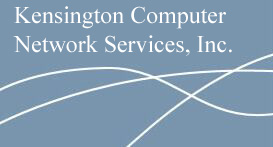

Remote Access to Your Network
The ability to access the company network remotely can be useful in many ways:
- Workers can perform tasks from their homes during off-hours, or when confined to their homes.
- Mobile employees can access data or office email from various locations.
- Administrators can trouble-shoot problems, make certain repairs, and perform a variety of administrative tasks remotely.
- remote control
In this method, the remote user takes over control of a station (the "host") at the main office network. Usually, only one remote session can take place at a time for each "host". This method usually has the quickest response, since the host is actually executing all applications, and merely sends video screen updates to the remote station.
- remote node
Here, the remote computer actually logs into the office server and is connected to the network itself, albeit via a slower link. In this method, the remote station is running the applications. Generally, one can easily have multiple remote sessions occurring simultaneously.
Here are some examples of the most common remote access methods:
Remote Control
There are many popular remote control programs available. Of these, the more popular ones are Symantec's PCAnywhere, Logmein, and GoToMyPC. These can connect by means of a phone-line modem or a high-speed Internet connection such as DSL or cable modem. Even phone modems can be quite responsive, since there is very little data traffic between the two locations. This is because the main traffic between the remote and office locations is keyboard strokes to the office and video screen updates to the remote. Again, keep in mind that you are generally restricted to one remote session per host station.
Remote Node - Software
Some examples of this method are Microsoft Windows Remote Desktop and Citrix's MetaFrame. Here, the software is loaded onto a server containing a modem or modem array. This method could be slower, since the application is run on the remote station via a slower link. Therefore, this method is useful for a quick file transfer or email read. You can have one remote session per host.
Remote Node - Hardware
This is a dedicated hardware remote node solution. This box is connected to one or more modems. Some companies making these units are 3COM, Cisco, and Shiva. Again, the same speed limitations of the software remote nodes apply.
Virtual Private Networks (VPN's)
This could be considered a form of remote node access. Here, the remote station connects via the Internet to the office network. Both the remote station and the office network must obviously have Internet access. Usually, the office network has a router through which it connects to the Internet. This router may have VPN ability built into it, or the VPN may be in a separate machine on the network, such as a Windows NT server. A VPN can have excellent security features, which is critical for communications over a public medium such as the Internet. Responsiveness can be excellent, since we are now communicating over a high-speed link. Also, we can have several sessions occuring simultaneously.
Terminal Services
A service that is built into Windows Server (and some Windows client versions) is Terminal Service. This allows an administrator (or two) to connect to the server directly (usually via Internet), view the server's screen in a separate window, and essentially act as if you are sitting in front of the server. The "administrator mode" will allow two simultaneous connection, and is no-cost feature of Windows Server. Should you need more users, you can use "application mode", which allows many users simultaneous access, but requires a terminal services license server to be running. This adds to the cost and complexity. Certainly, for one or two remote users, such as network administrators, administrator mode can be a very valuable tool.
Web Server / FTP Server
An office web server can be used to host general information for the public, or for users to privately access their email via the Internet. The FTP server can be used for users to upload / download data files. These services are easily loaded onto Windows NT or Novell servers, and are included with the server software. Again, the office network must have Internet access. Furthermore, the number of simultaneous sessions is not an issue.
As you can see, there is a wide variety of remote access options. For further information on this topic, please feel free to contact us.
Return to Technical Topics Menu